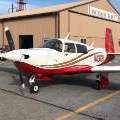What is "slow flight" instruction?
-
Members Online
- Vermonter
- atpdave
- LANCECASPER
- Fly Boomer
- AndreiC
- Htmlkid
- 303mooney
- Ron McBride
- Scooter
- 201Mooniac
- Jim F
- Blaze
- DonMuncy
- bencpeters
- RangerM20
- DCarlton
- acekng1
- Planter
- Roseusaf
- flyingcheesehead
- hbpil
- spitzfyre
- redbaron1982
- Pepperjet
- Greg Ellis
- eman1200
- Peter T
- theoriginalturk
- Igor_U
- boboxa9895
- hammdo
- A64Pilot
- Rwsavory
- Jakes Simmons
- MaxwellSmart86
- TCC
- HIghpockets
- Fix
- Vulcan81
- Sabremech
- Stubby
- mooneyfun
- 201Steve
- Scottknoll
- Yetti
- Tim VanDenHoek
- caa0428
- patriot3300
- Aerodon
- flyboy0681
- UteM20F
- phxcobraz


Recommended Posts
Join the conversation
You can post now and register later. If you have an account, sign in now to post with your account.